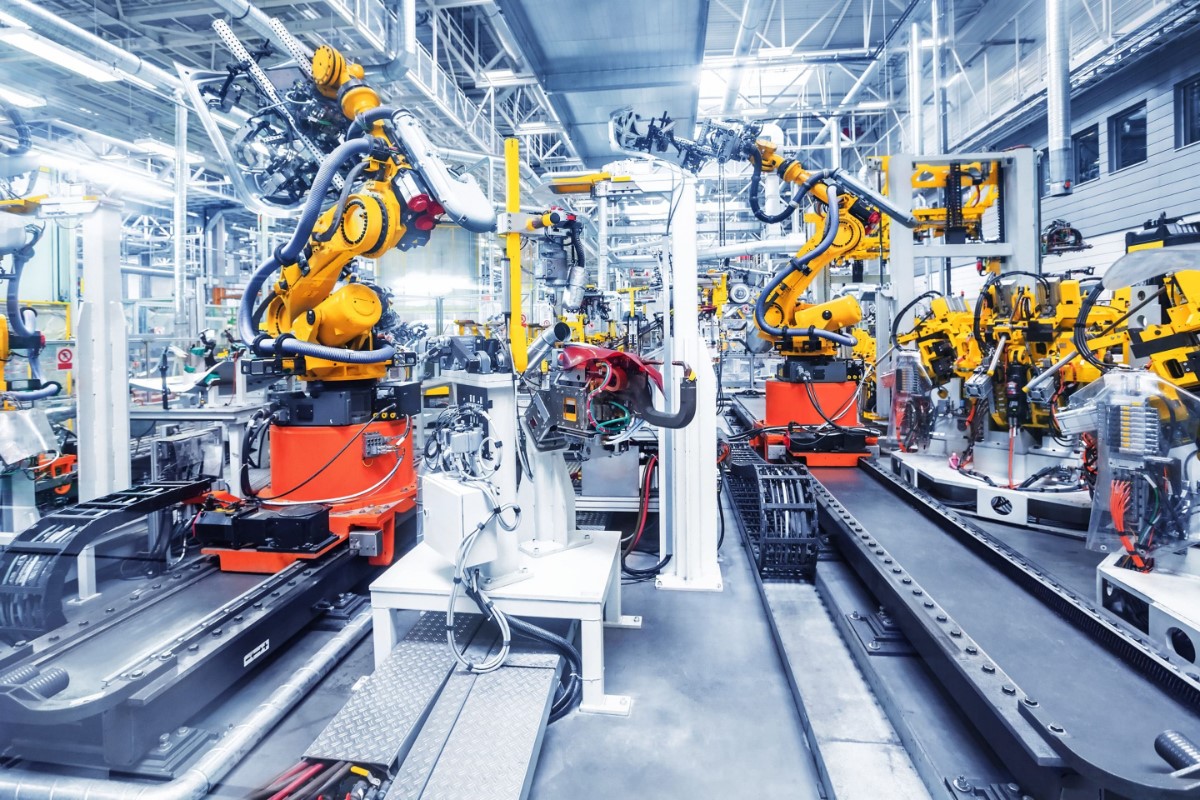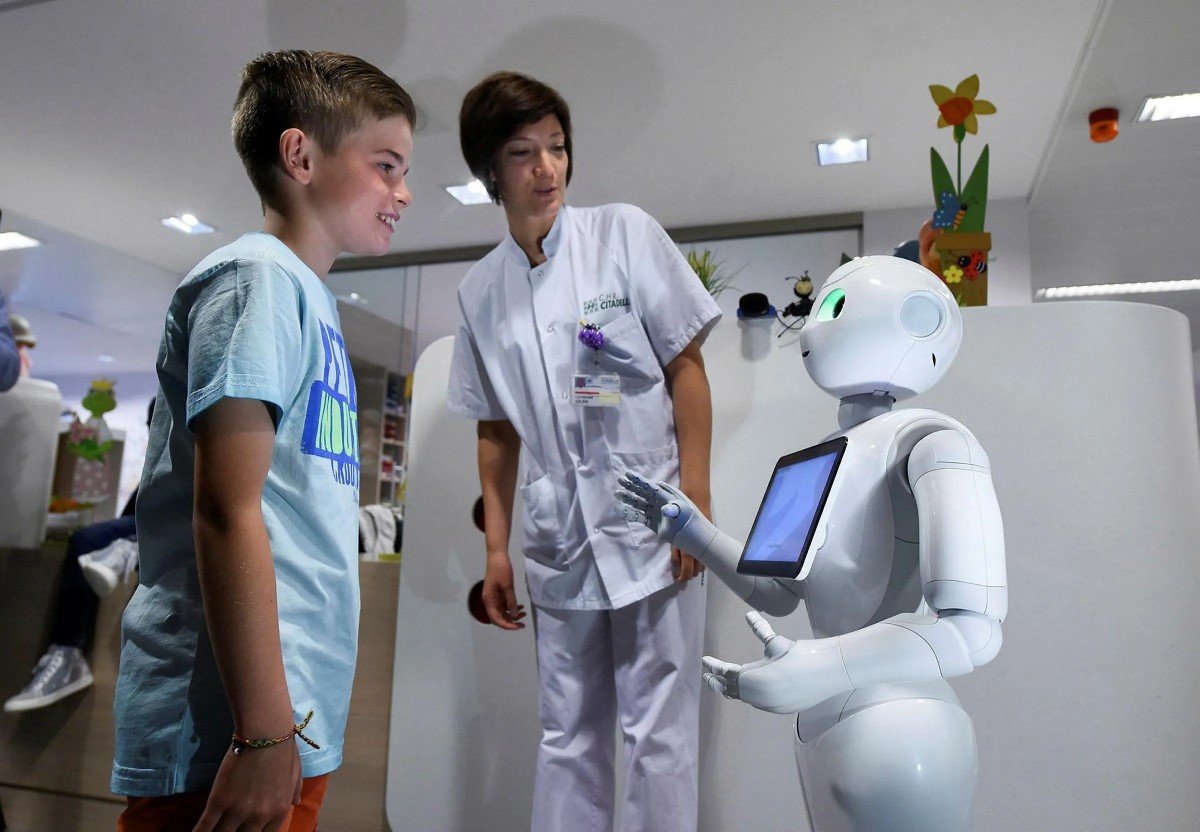In the past year alone, there has been a lot of controversy and discussion around statistics about jobs lost to automation.
More specifically, the concern is based on the rapid development of artificial intelligence.
It’s important to note that some industries will be affected more than others. However, on a global scale, automation is expected to replace roughly 85 million jobs by 2025.
This is just another tech advancement that we’ll all have to adapt to. Even if some jobs are replaced, artificial intelligence will be seen as a tool to simplify manual tasks.
In this article, we’ll highlight important statistics you can expect to unfold in the near future.
Post Contents
- 1 Statistics About Jobs Lost to Automation
- 2 Shocking Statistics about Jobs Lost to Automation in 2024
- 2.1 1. Manufacturing Jobs Decline by 3%
- 2.2 2. A Quarter of U.S. Jobs are Experiencing Disruption
- 2.3 3. Jobs With the Highest Risk of Automation
- 2.4 4. Millions of Jobs Lost to Automation in the U.S. by 2030
- 2.5 5. China and Manufacturing Automation
- 2.6 6. Food Preparation is at a Very High Risk of Full Automation
- 3 Other General Statistics Regarding Jobs and Automation
- 4 Final Notes
Statistics About Jobs Lost to Automation
Key Takeaways:
- Currently, around 1.7 million manufacturing jobs have been lost to automation
- Roughly 25% of jobs in the U.S. are at high risk of being entirely automated
- By 2030, around 375 million jobs will be lost to automation globally
- 133 million new jobs were created in the automation industry in 2022
- Automation is on track to eliminate 36 million people from the workforce
Shocking Statistics about Jobs Lost to Automation in 2024

The rapid advancements we’ve seen in automation have caught the attention of the entire world.
It’s likely to be one of the most talked about technological advancements, primarily due to how it’ll affect our lives.
Statistics help us prepare for the future and provide insight into how detrimental or beneficial automation can be.
To better understand what’s to come, let’s go over some of the most important statistics regarding jobs lost to automation.
1. Manufacturing Jobs Decline by 3%
That number may not seem like much, but it’s expected to increase in the upcoming years.
Since 1980, manufacturing jobs have declined by 3%, and this is in reference to the implementation of automation.
Although AI has quickly taken the world by storm, various forms of automation machines have been around for decades.
Considering there are many repetitive and mundane tasks in manufacturing, it’s easy to say why automation has become a normal part of the industry.
However, manufacturing jobs are a way of life for many people and one of the easiest jobs to find in many different parts of the world.
Even if efficiency in manufacturing has increased by 20% due to automation, many workers are concerned about job security more than ever.
2. A Quarter of U.S. Jobs are Experiencing Disruption
At this time, around 25% of jobs in the U.S. are going through varying levels of disruption due to automation technology.
This is a pretty steep percentage and can be found in a broad range of industries.
This number represents around 36 million jobs that are at high risk of being automated.
The risk doesn’t stop there, as 52 million jobs in the U.S. are at medium risk, and 57 million are sitting in a low-risk category.
It’d be smart to expect that almost no job is safe from some form of automation.
This is why it’s important to look at automation as a helpful tool, and hopefully, industries will find a way to adapt it to the workforce.
From another perspective, labor costs have gone up by over 200% since 1990, but the cost of robots and automation has decreased by over 50%.
When you look at it from a business perspective, you can see why so many companies are shifting their focus to automation.
3. Jobs With the Highest Risk of Automation
Automation has the potential to invade all kinds of various industries, but many people are concerned with high risks categories.
Some jobs on the market right now can essentially be 100% automated, voiding the need for any human input whatsoever.
Below is a life of 10 jobs with the highest risk of automation:
- Tax Preparer – 97%
- Procurement Clerk – 97%
- Library Technician – 97%
- Food Science Technician – 97%
- Cargo and Freight Agent – 97%
- Agricultural Inspector – 96%
- Real Estate Broker – 96%
- Counter and Rental Clerk – 96%
- Correspondence Clerk – 96%
- Manicurist – 96%
There are millions of people involved in these industries, and it’s just a glimpse at how so many people could be affected by automation.
It’s also important to look at the jobs that are at low risk of automation. These seem to offer more job security than others, as they require much more human input.
Jobs that are at low risk of automation include:
- Podiatrist – 0.34%
- Nursing Instructor – 0.19%
- Art Therapist – 0.17%
- Neuropsychologist – 0.02%
- Exercise Physiologist – 0.02%
- Technical Education Teacher – 0%
- Rehabilitation Physician – 0%
- Physical Education Specialist – 0%
- Occupational Therapist – 0%
- Music Therapist – 0%
It may look like automation is quickly taking over the world, but there’s still plenty of need for human involvement in many industries.
Just like any tech advancement throughout history, it’ll require adjustment and adaptation from society as a whole.
4. Millions of Jobs Lost to Automation in the U.S. by 2030
Current data shows us that roughly 73 million jobs will be lost in the United States by 2030.
For many people, this can be quite alarming. As automation technology continues to develop, it’ll only become more adaptable and intuitive to a variety of tasks.
Even those who feel their jobs may be complex will eventually encounter automation that can take their place.
Stats on jobs lost to automation look different in various parts of the world. For example, Germany will only encounter around 17 million jobs lost.
On the other hand, China is expected to be disrupted the worst, as they could lose as many as 236 million jobs by 2030.
These are conflicting times, as we have to accept that automation won’t slow down, nor will it go away.
We have to find a way to implement it into the daily lives of everyday people, or we could experience record-high numbers of job losses in the near future.
5. China and Manufacturing Automation
Although many countries are experiencing increasing automation in the manufacturing industry, China takes the lead on this one.
It’s estimated that China has around 14 million robots working in manufacturing, and this number continues to expand.
It won’t be long before a majority of their production lines are automated.
Considering how China operates, this isn’t something that they’ll step down from.
Millions of their people rely on these jobs, and we can only hope they find a way to blend the needs of people with automation tools.
6. Food Preparation is at a Very High Risk of Full Automation
This is another industry that is an extremely common job for millions of people around the world.
Automation has been integrated into food preparation to a degree, but it’s quickly becoming a more relevant part of the process.
Over 60% of food preparation jobs are at risk of being fully automated.
This may be hard to hear, but this isn’t the only industry that’s facing a quick increase in automation. Areas such as construction, cleaning, and driving are all in the same boat.
These figures can be somewhat intimidating, but it’s going to force society as a whole to adapt to these tools.
Automation may be taking a significant number of jobs, but it’ll also offer opportunities for many new jobs that never existed before.
Other General Statistics Regarding Jobs and Automation

The stats mentioned above all have a focus on job loss, but there are many different ways that automation can affect the global job market.
Some aspects of automation come with a surprising amount of opportunity, and other areas will encounter automation as just another helpful tool to their workflow.
7. The Medical Robots Market
With each passing year, medical robots are becoming increasingly important to the medical industry. By 2023, the medical robot market is expected to reach $12.6 billion.
This leaves a lot of room for companies to take advantage of and develop automated products that the medical industry needs.
It also leaves room for workers to learn how to operate various aspects of such robotics.
That’s something else to consider; although many robots come with automated features, other aspects require human input for them to function properly.
This is a good example of a foreseeable opportunity.
Once again, robotics and automated tools aren’t necessarily a new concepts to the medical industry, but their advancements and widespread implementation are.
Many highly trained medical professionals depend on these tools to help their patients, many of which have helped deliver life-changing outcomes for people’s health.
8. IT and Power Companies Need Employees for Robotics
In some ways, both the IT and power industries are experiencing high levels of automation, but it has also made way for new jobs.
Nearly 21% of companies within these industries are offering positions centered around robotics.
This statistic comes from January of 2022, and you can expect that this number has increased since then.
This is good news for anyone who went to college for robotics, as this will be a high-demand field on a global scale.
It’s also interesting to point out that the 21% is a 13% rise from one year prior.
Regarding robotics in general, statistics show that IT and power companies are hiring the most robotics-related positions on average.
Automation shouldn’t be looked at as a doomsday event; it’ll simply require an adjustment to how we see jobs and our workflow from multiple angles.
9. GDP Growth in Different Countries
On a positive note, GDP growth is looking good in different parts of the world. By 2030, analysts predict that North America will see a 14% uptick in GDP growth.
Even more so when you take a look at China, their GDP growth by 2030 is expected to reach upwards of 26%, all thanks to the automation industry.
North America and China are expected to account for roughly 70% of the global automation industry expansion.
When you take into account that the automation market will be worth around $15.7 trillion by 2030, you can understand how this positively affects the GDP.
With increased productivity and product quality due to automation, statistics state that it could cause around $9.1 trillion in consumption side effects.
To explain further, this is relevant to attractiveness, affordability, and personalization regarding different products and services.
10. How Various Education Levels Will be Affected
This isn’t a new concept, as education has been relevant in any industry for generations.
However, with the further implementation of automation, those with varying education levels will be affected in different ways.
To summarize, those with a higher level of education will be at a lower risk than those with less education history.
Statistics show that around 40% of individuals with low education will experience displacement from their jobs.
Whereas only around 10% of people with higher education will be affected.
This shows us that education is still important, regardless of how much easier certain jobs seem due to automation.
The rise in automation will also change the importance of certain types of education.
Young people looking for a career path through college may lean more toward jobs that require their skills, regardless of automation.
Changes made in the job market due to automation are still new for many people, and it’ll take a while for the masses to really understand it.
Whether we’re ready or not, most of us will have to adapt to it in one way or another.
Education is undoubtedly important, but the type of industry-specific education that matters may quickly change in the coming years.
Final Notes

Automation has struck quite a bit of fear in people all over the world, but a lot of this is due to the fact that it’s misunderstood.
Yes, many jobs will be lost due to the technology, but millions of new jobs will also be created.
How we go about accepting this change won’t be a smooth process, but many people feel it’s for the better for numerous reasons.
This article highlights the most important statistics about jobs lost and automation, so you can be prepared for what the future holds moving forward.






























